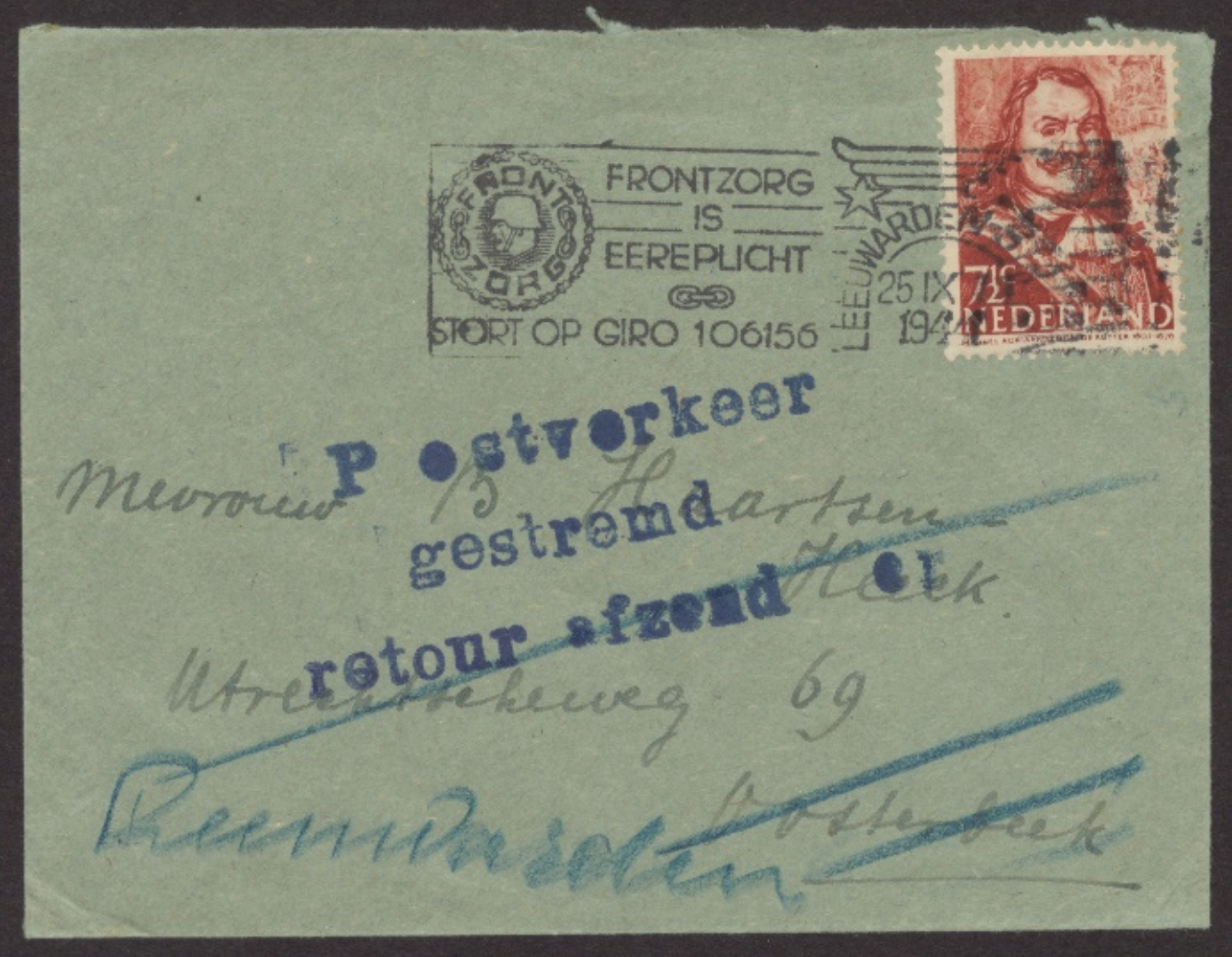About the Arnhem Postal History Project
The Arnhem Postal History Project (APH) is a digital public history project that makes available to the public for the first time over 5,000 individual letters and postcards circulated inside and outside the Netherlands between 1939 and 1945. The collection is a critical one for understanding the everyday lives of the Dutch during WWII through postal history. The collection provides important insights into key moments on the Dutch front, including the invasion of Holland, the emergence of the Holocaust in Holland, Operation Market Garden, and the resulting Hunger Winter, where thousands of Dutch civilians were intentially starved by the Nazis.
Letters provide direct firsthand, conteporaneous records of the social impact of Word War II and the brutal battle that are now so well known to many. The post was the primary means of communications in a pre-cell phone world. Citizens relied on the post to provide news on extended family members. The post does this very well. The Dutch post office kept meticulous records and we know in detail when each item of mail went from one location to another.
Postal artifacts provide a tangible connection and different perspective to events that may already be well-known to many. Almost be definition, every postal artifact includes inforrmation onthe sender as wella s the recipient; who sent it and to whome, and the cover is inscribed with precise information about the date and even the time of day that it was sent and the timing and route it took until delivered (or otherwise handled). As such the post provides a vibrant, contemporaneous testament to the experiences of the Dutch people and the combatants on both sides. Importantly, these artifacts were there when these tumultuous events occurred. They are not digital representations or recreations, but these scraps of paper with the sender's handwriting were actually present when these events took place.
However, handwritten notes, letters and even books are fast being replaced by a digital world, with seemingly unlimited amounts of information (and disinformation) available on demand. While the digital is infintely reproducible, the older analog world is fast losing its remaining artifacts with fewer and fewer replacements available. This project focuses at the junction of the analog and the digital and estblishes an interactive "journey' where students and other can follow an authentic but very "old world" analog postal artifiacts as it travels through the Dutch countryside and the war.
Project Team
- Kees Adema, researcher
- Tim Gale, primary investigator
- Jason Heppler, web developer
- Kristin Jacobsen, project manager
- Amanda Madden, project lead
- Susie Nguyen, ux designer
- Emma Sapp, graphics
A letter from the Director
My name is Tim Gale and I am the Director of the Arnhem Postal History (APH) project, a non-profit entity based in the United States of America. The APH project examines the intersection of social and military history and the role of the postal service during the Battle of Arnhem, and more broadly World War 2 in Holland. Postal artifacts provide direct firsthand, contemporaneous records of the social impact of the brutal battle that is now so well known to many.

Handwritten notes, letters, and even books are fast being replaced in a digital world, with seemingly unlimited amounts of information (and disinformation) available on demand. While the digital is infinitely reproducible, the older analog world is fast losing its remaining artifacts with fewer and fewer original sources available. It is our intention to focus on the junction of the analog and the digital and establish an interactive “journey” where students and others can follow authentic but very “old world” analog postal artifacts, as they travel through the Dutch countryside. Whole communities of enthusiasts, among which I include myself, spend hours researching the arcane details of individual soldiers’ experiences in specific rooms at houses dotted around Arnhem and the near-by village of Oosterbeek. However, relatively little attention has been paid to the experience of the civilians impacted by the Battle of Arnhem and the war.
I did not set out to become a philatelist. In 2019, a life-long friend, who is a renowned philatelist, gave me a single “cover” addressed to Mevrouw (Mrs.) B. Haartsen-Heeck at Utrechtsweg 69, Oosterbeek, dated 25 September 1944. It started me thinking about the experiences of the lady whose home was located right on the front line of the battle between the 1st British Airborne Division and assorted German forces.
My “pandemic project” has now grown into a collection of over 6,000 postal items sent throughout Holland during the five years of war (1940-1945). Clearly, not all items within our collection are specific to Arnhem nor do they all fall within the time frame of the battle, but many of them contribute to an understanding of a Dutch population enduring one of the most fierce battles of the Second World War as it was acted out in their homes and gardens.